In 2019, Businesses Will Need to Embrace Sustainability, or Risk Being Left Behind


What would you do if you only had 12 years to stop catastrophic climate change? At COP 24 in Poland earlier this year, 200 nations formed plans to collectively tackle this issue, and their message is clear: as nations, we will go beyond our commitments and ambitions from the 2015 Paris Agreement to further reduce emissions and tackle one of the world's greatest challenges.
Multinational agreements are a fantastic way to spark progress, but as HP’s own commitment to the pledges set out in Paris shows, the torch must also be carried by business leaders, who can set an even higher bar to reduce their footprint and create a sustainable impact which is larger than themselves and their companies.
Everything from day-to-day business practices to more energy efficient ways of designing, building, and delivering products or services should be under review. Why? Because it’s not only the right thing to do, but sustainability can be a business driver and differentiator. Last year we saw a 38% increase in deals where sustainability was a requirement – and we expect that to grow as consumers and business place even higher expectations on corporations. Companies and customers want to buy goods and services from entities that they trust to do the right thing for the environment, for their employees, and create a positive impact in their communities.
Not only is sustainability something to embrace in the short-term, but corporations must invest in longer-term initiatives and push their entire supply chain towards reinventing how to explore, make, and source products.
Looking back at history, innovative solutions that shift towards low-carbon methods and embraced the concept of a circular economy, have not only spurred social change, but build entirely new industries. Take modern recycling which rapidly grew from the 1970s and today provides a sustainable method for businesses and consumers to take an active role in creating a cleaner environment, employing people, and safeguarding our world and future resources. Well, it’s now being super-charged for the 4th Industrial Revolution – at HP, for example, we’ve recycled over 271,400 tonnes of hardware and supplies since 2016, and are aiming for 1.2 million tonnes by 2025.
That’s not the only way that new technology is driving sustainability in business. 3D printing will completely revolutionize the manufacturing process in coming years, reducing emissions, eliminating waste, and enabling new economies in remote parts of the world. The possibilities are limitless. 3D printing will make manufacturing much more localized and much more on-demand, which will provide real benefits to the planet. Applied across nearly every industry, from medical to infrastructure - digitization of the supply chain enables just-in-time delivery, helping to create a world one day without warehouses, without inventory, and without waste.
Take the automotive industry as an example. 3D printing enables factories to print out a bespoke hubcap, rather than having to ship it in from a factory half a world away – taking days or weeks to reach them and burning fossil fuels in the process. The result of 3D printing produces a series of positive outcomes – cutting time, increasing efficiency, reducing inventory and capital tied up, and eliminating exorbant transport – a very real example of how businesses can reap the rewards of embracing sustainability.
Businesses can embrace sustainability across the entire supply chain while supporting the communities around them. By adopting a circular economy into their business and embracing an attitude of repairing, reusing and recycling as opposed to disposing of their products, this can help create new jobs and opportunities for individuals while helping the environment. Just recently, HP joined NextWave Plastics, a consortium of worldwide businesses who are scaling the use of ocean-bound plastics, and decreasing the volume of plastic waste before it enters the oceans.
Embracing sustainability is an effort which requires collaboration between businesses, governments and consumers, who all must take on an increasingly active role. Nonetheless, it’s our responsibility and duty as business leaders to be out front driving change and leading by example. After all, we need to make huge strides in sustainability in the next 12 years in order to help save our planet.
For us, sustainability is not only the right thing to do, it’s a business imperative, and good for our consumers, our employees, our communities, and for our world. Ensuring our global operations product portfolio are sustainable, prioritizing diversity and inclusion, and investing our time and resources in building vibrant and resilient communities are fundamental to our vision for HP’s sustainable impact – and we will continue our commitment to this in 2019 and beyond.
Previously posted on the HP Blog and 3BL Media news.
Image credit: Jay Mantri/Pexels
In 2019, ESG Means New Innovations in Healthcare
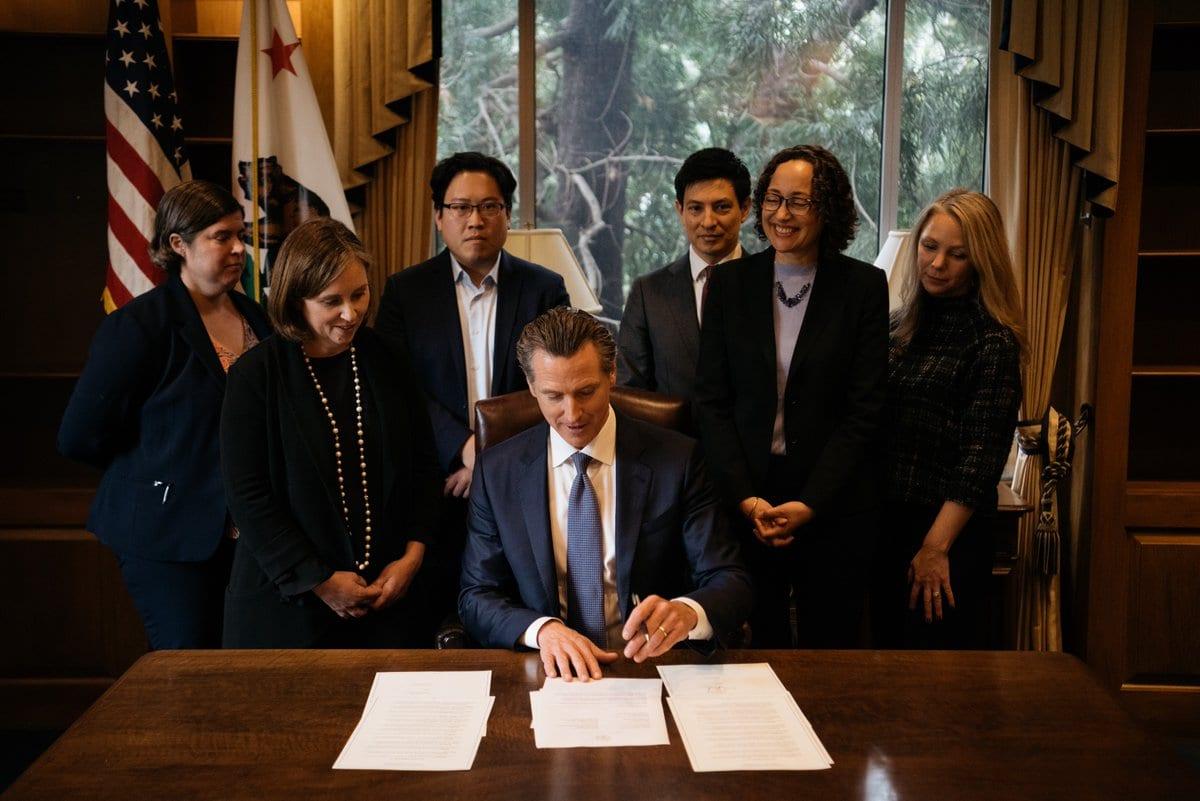

Gov. Gavin Newsom of California signing executive orders related to healthcare, January 8, 2019.
The debate over healthcare delivery, access and cost in the U.S. is a tortured one and will not end anytime soon. Healthcare costs are a constant cause of angst in C-suites and conference rooms as companies grapple with rising prices. For individuals who lose their healthcare coverage and must buy it on their own, the stress at the thought of paying premiums out-of-pocket can be overwhelming.
The healthcare sector evolves at a glacial pace compared to other industries, but change is imminent. Last year, Amazon, Berkshire Hathaway and JPMorgan Chase launched a partnership to drive out the middlemen and rein in wasteful spending in the healthcare industry. Meanwhile, more consolidation across the sector is occurring: witness the CVS acquisition of Aetna, which could transform how many consumers can access treatment as more patients are diverted from far more expensive hospital care.
Furthermore, advances in technology will revolutionize healthcare. A recent PwC survey suggested we will see more digital therapies that can help deliver health services, avoiding more expensive office visits. Consumers that spoke with PwC indicated they were open to healthcare options powered by digital technologies if such options were more affordable—which in part explains why venture capital funding for such companies could reach almost $7 billion once the 2018 numbers settle in.
All of these innovations sound fantastic for these big companies’ bottom line. But what about those workers who comprise the growing “gig economy?” There is also the question about lower-wage workers who are pushed into higher-deductible healthcare programs, although they are the ones who can least afford such plans.
California may just become the laboratory in which we will observe how these technological shifts in healthcare will pan out.
Yesterday, in his first act as California’s governor, Gavin Newsom announced a flurry of executive actions and budget proposals that seek to lower healthcare costs while expanding access. The initiatives include providing Affordable Care Act financial assistance to middle-income families who were previously unable to benefit from such subsidies. In addition, Newsom is pushing for a statewide, scaled-up program that will allow the state government to join forces with private employers to negotiate the price of pharmaceuticals. The governor also sent a letter to the White House and Congress asking the federal government to rescind laws that allow for states to develop their own healthcare programs—think: single-payer.
The knee-jerk reaction is to attack these proposals as runaway tax-and-spend policies without any ability to slam on the breaks. But like all U.S. states, budget realities will kick in—federal and state mandates together limit California’s discretionary spending. Newsom would also be wise to remember that California’s “rainy day” fund—built up by his predecessor, Jerry Brown—now stands at $13 billion but could dissipate quickly if the state hits an economic downturn.
Therefore, if small- and medium-sized businesses can participate in a statewide consortium that allows for access to healthcare, the outcome could mean lower premiums for companies and their employees. Technological innovation and new ways of providing services can further push down costs, allowing more freelancers and middle-income families to access affordable healthcare. In addition, Newsom’s directive to establish a statewide surgeon general's office could help address the root causes of the most intractable health problems while taking on the social determinants of health.
From how citizens are taxed (as in Prop 13) to how their future electricity is produced, California has long been a state from which trends launch, before the other U.S. states follow. And now, Newsom’s directives are more than a push for “Medicare for all.” If more citizens are scoring healthcare services at places other than pricey medical clinics, while benefitting from cheaper prescription drugs—assisted by healthcare technology startups that can modernize and cheapen healthcare—many businesses and their customers could benefit in the long term. As they always say, the definition of insanity is doing the same thing over and over and expecting different results. So give Newsom some credit, with the caveat that the private sector will have a critical role in transforming how Californians receive their healthcare.
The upshot for companies this year is that healthcare will be a big part of the "S" and "G" in ESG (environment, social and governance). Access to healthcare is a huge but difficult part of having a vibrant society; and keeping companies economically sustainable depends on keeping healthcare costs in check. Hence the opportunity to work with California should be viewed not as an obstacle to business, but as an opportunity.
Image credit: Office of Governor Gavin Newsom
Renewal Mill Upcycles Soy Waste Into a Flour Alternative
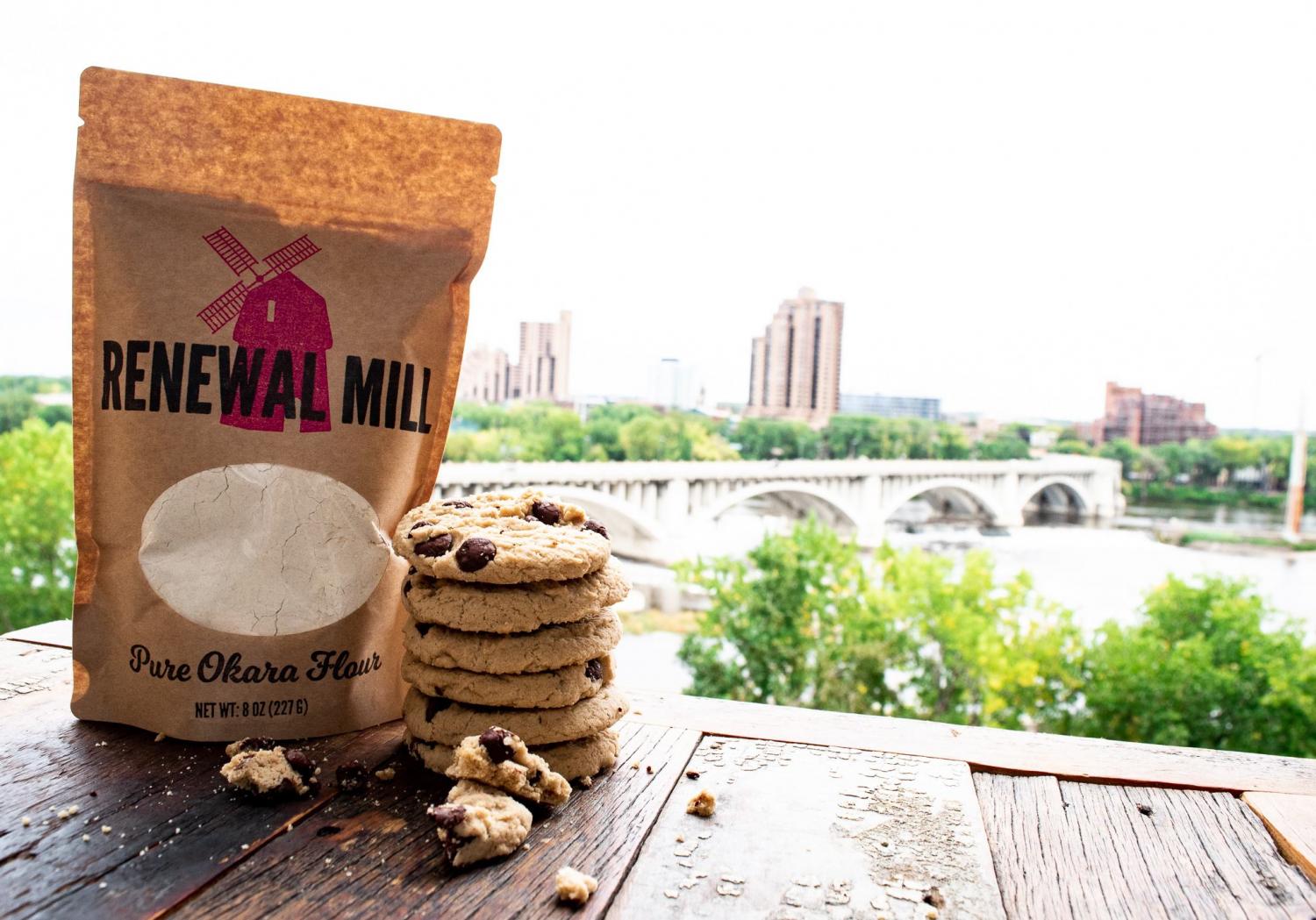

It’s not easy being a ketogenic flexitarian (thankfully I don’t have to say that at too many cocktail parties, as I don’t drink). Legumes aren’t an option as they have too many carbs. And I also try to limit my meat intake, for the obvious environmental, health and ethical reasons.
Tofu seems to be the answer. It’s cheap by weight compared to meat, loaded with protein and easy to prepare. Cut it into cubes, add it to a broth or sauce, add some veggies and BAM! You’re done.
Yet there's an ongoing debate over whether producing soy-based food products has its own long-term impact on land and water. Plus, there’s the tofu waste byproduct, okara—which has inspired some ideas for food and beverage products over the years, but often ends up discarded, just like nut shells or the pulp from making fruit and vegetable juices.
Oakland-based Renewal Mill says it has an answer to all that waste.
The solution comes after soybeans and a coagulant are added to water to make a soy milk. The solids that are usually discarded during the process, known as okara, are a lot for a tofu manufacturer to deal with. Churning all that tofu often leaves a factory with about a one-to-one ratio of tofu and okara. Bland and flavorless, okara is rich in protein and fiber, but it's generally viewed as waste or sent to dairies or livestock producers for use in animal feed.
That’s where Renewal Mill steps in.
The company developed a process that takes all of that okara, dries it and then mills it into a high-protein flour substitute.
The result is a win-win-win. Tofu manufacturers can say they’ve found a more responsible and sustainable way of offloading that waste. Carb avoiders can find a way to make high-protein and high-fiber chocolate chip cookies or pancakes. And Renewal Mill says its technology allows for the potential to take other food waste byproducts and transform them into something more useful—think: pomace from grapes and olives, potato pulp and even pistachio shells (the company says those teeth-shattering shells can be used as mulch or even to smoke meats in a barbecue).
One company that has benefitted from working with Renewal Mill is Hodo, the maker of a bevy of creative tofu-based foods. Hodo used to pass on its okara to dairies or livestock producers, but now all of those pesky granules are going to Renewal Mill. As a result, Hodo makes more than 2.5 times more money for that unwanted okara, Fast Company recently reported.
Companies like Renewal Mill have an important role in society’s quest to feed the expected 10 billion people who will live on this planet by 2050. After all, the future does not have to be a dystopian one that witnesses more forests being felled for farms and pastureland, especially since as much as 40 percent of the food produced worldwide ends up wasted. Taking a product once seen as worthless and turning it into a premium product of value, just as Renewal Mill is doing, has an important role in both stopping hunger and pushing us to become better stewards of the planet.
Image credit: Renewal Mill/Facebook
Why Clean Energy Investments Should Be Part of Your Risk Management Strategy
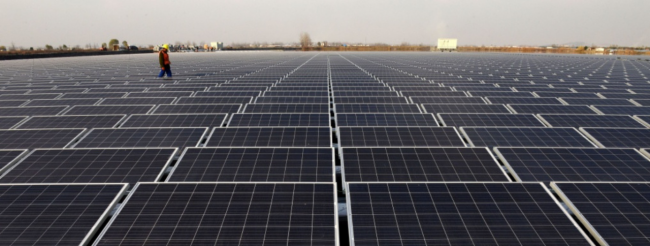

There’s a new way to approach energy risks that should interest business leaders who navigate today’s changing economy.
Is your corporate risk management strategy considering these three realities, and how to respond?
Energy prices are volatile and hard to predict
Energy prices fluctuate so knowing when to lock in the best price, and for how long, is a perennial challenge for businesses. Unless, that is, you consider signing a long-term Power Purchase Agreement with an energy provider that specializes in predictable renewable energy – or install your own clean energy infrastructure.
Both options will help you avoid that energy price roller coaster and likely save your business money over time.
PPAs have become mainstream in recent years as the renewable energy sector continues to expand; corporate PPAs grew 20 percent over the last two years to 5.4 gigawatts procured in 2017. Just this month, for example, an Illinois wind farm signed a $325-million contract to sell energy to Bloomberg LP, General Motors, and to 340 Starbucks stores through Constellation, an energy services company.
On-site renewable infrastructure is another option businesses use to hedge against energy risks. So far, Fortune 500 companies such as Target, Walmart and Apple have installed solar arrays or roofs at nearly 2,000 individual project sites in the United States to secure stable and lower energy prices.
Such investments are not limited to huge companies or brands. Increasingly, smaller companies are also making on-site installations to reduce uncertainty and bills.
Energy choices, competition go hand-in-hand
Knowing how to maximize the benefits of your energy choice requires a thorough analysis of your energy needs and appetite for risk.
A PPA procurement deal, which can last up to 30 years, gives a business a predictable power rate that will often beat the prices fossil-fueled sources can offer today. New and innovative PPA models are now opening up more possibilities for companies that opt for this solution.
By locking in the price, however, a PPA can preclude future savings should the price of, say, wind power drop significantly over the next five or 10 years. Such a structure may suit a company with few competitors that seeks stability, even if it means it won’t have access to lower prices down the line.
Those facing fierce competition, on the other hand, may seek to avoid a PPA, as would companies specializing in energy-intensive production where power prices have a direct impact on production costs. They would more likely want the option of regularly renegotiating their power purchase deals to take advantage of better rates.
Businesses for which a PPA is a poor fit may instead take the other route: a large capital investment in on-site renewables. In addition to shielding the owner from energy price volatility, such infrastructure investments can benefit from millions in federal and state tax credits and maybe generate new revenue by selling power back to the grid.
Even so, there can be some challenges.
Business needs and policies must be aligned
To this day, nine states still won’t let a company go directly to a third-party provider of renewable energy to negotiate a PPA. Thirty-one states don’t offer state tax credits for solar panels, and seven states have yet to let companies sell power back to the grid – to mention a few barriers.
If your company has offices or plants in any of those states, you may be out of luck – unless you get on the phone and start knocking on your utility’s and policymakers’ doors. That’s what companies such as Walmart are doing successfully to gain broader access to renewables.
Some of our largest brands are also trying to break down barriers to PPAs in Europe, where the market is largely untapped. The message for anyone struggling with limited energy options is that applying pressure on state and national lawmakers is good for business and our economy.
Because when companies manage risks, everybody wins.
Previously posted on EDF+Business and 3BL Media news.
CEO Shares How Transparency Helps SC Johnson Address Global 'Crisis of Trust'
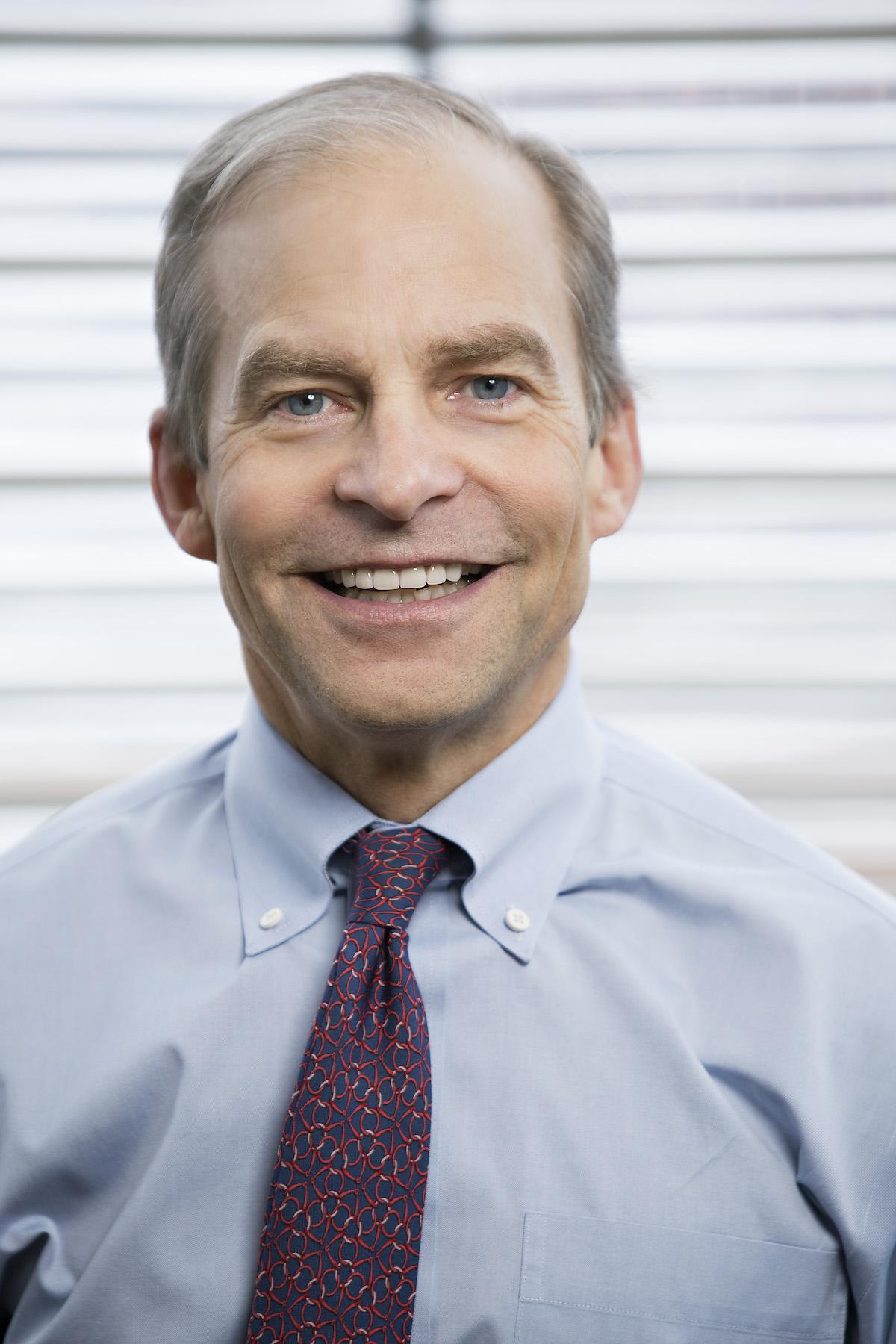

Overall trust in global institutions is in sharp decline. According to a 2018 Edelman survey of 9,000 people in nine countries, a little over half of the general population trust the business community. Less than 45 percent trust their governments or the media.
Top brands, including the family-owned household products company SC Johnson, are taking notice of these trends. "There's a crisis of trust across many sectors of society today, and for a business like ourselves, it's a huge issue," said CEO Fisk Johnson, a fifth generation member of his family to lead the private company.
"The risk to business from low trust has never been as high as it is today," Johnson told TriplePundit. "It plays a role in consumers' purchase decisions, in how people feel about working for a company, and in a community's goodwill toward that company."
Indeed, more than one in three consumers ranked "trust in the brand" among their top three reasons for purchasing a product, according to a 2018 survey from PwC. Likewise, 82 percent of institutional investors say “my trust in the company” is important when considering investments.
As part of an ongoing effort to build trust among its stakeholders, today SC Johnson announced a milestone nearly a decade in the making: Each of the company's nearly 6 billion global customers can now learn more about the ingredients in popular SC Johnson products like Glade, Pledge and Windex with only a few clicks on the Web. The announcement came along with a white paper on how transparency builds trust, created by SC Johnson and the market research firm GlobeScan.
3p spoke with Johnson by phone to learn more about this industry-leading transparency program and how it helps the company maintain trust at a time when it's in increasingly short supply.
Building transparency worldwide
"Research shows that transparency can build trust, but quite honestly, it's not really how I've thought about it," Johnson told us. "I've always thought it's simply the right thing to do. It allows people who buy our products to know what they're buying so they can choose what's right for themselves and their families."
SC Johnson launched its transparency program back in 2009 by making a list of ingredients available to U.S. and Canadian customers at WhatsInsideSCJohnson.com. The program extended to European customers in 2016, to the Asia Pacific market in 2017 and to the company's only remaining market, Latin America, this week.
Global customers now have access to a suite of resources detailing what ingredients SC Johnson uses and why. The company discloses product-specific information about more than 350 skin allergens and all fragrance ingredients down to .01 percent of the product formula. Last year, SC Johnson also became the first in its industry to make the science behind its ingredient selection program available to the public.
The company's peer-reviewed Greenlist program assesses the human health and environmental impacts of more than 3,500 ingredients, and NGOs were quick to praise the methodology when details became public.
“It is clear that SC Johnson’s Greenlist methodology was rigorously designed, and that the company is not afraid to evolve its methodology in its pursuit of safer products," Boma Brown-West, senior manager of the Environmental Defense Fund, told Chemical Watch.
Even the U.S. NGO Women’s Voices for the Earth, which previously criticized several of SC Johnson’s ingredients, was impressed by the move. Its director of corporate accountability, Sarada Tangirala, told Chemical Watch that the Greenlist methodology offers "a level of detail and specificity in its approach to chemical screening and safety that we have not seen before in a cleaning products company."
Pushing for market-wide change
Using its Greenlist methodology, SC Johnson has already banned more than 200 raw materials and more than 2,400 fragrance materials that meet legal and regulatory requirements but don't pass its internal muster. "Regulation is often slow to come to the forefront," Johnson told us. "It's important for us as a company to stay ahead of what's going on in our industry to make sure our products are safe."
In its home country of the U.S., the Wisconsin-based firm continues to advocate for product transparency at the federal and state levels. It was an early supporter of bipartisan efforts to modernize the federal Toxic Substances Control Act (TSCA) and was one of the first CPG companies to publicly testify in support of strengthening the regulation. It also supported California's Cleaning Product Right to Know Act of 2017, which requires all cleaning product manufacturers to disclose their ingredients.
The company is also something of a trend-setter in its industry. For example, Procter & Gamble, Unilever and Reckitt Benckiser announced plans to begin disclosing fragrance ingredients within two years of a similar announcement from SC Johnson. CEO Fisk Johnson bears the first-mover label with pride and says he hopes more CPG companies will follow suit.
"As far as I'm concerned, the more companies that jump on the transparency bandwagon, the better it is for everybody in the industry," he told 3p. "Now that we've broken the ice, I think a lot of other companies have seen the light of day and the value of this."
What's next for SC Johnson
"We've set the same standard for everybody around the world, and I don't think any other company has done anything close to what we've done on transparency from an ingredient standpoint," Johnson told 3p. "But this is a journey. We've got a long ways to go in terms of what we want to do to be more transparent as a company."
Releasing the Greenlist methodology was a big step. Moving forward, the company hopes to partner with a third-party organization to objectively test the methodology and explain it to the public, Johnson said. It also hopes to leverage its transparency program to map raw materials across its supply chain, although that may be a long way off.
"A supply chain in a company like ours is incredibly complex," Johnson explained. "Trying to trace our raw materials, from the very beginning, is an almost impossible task today. We're going to start moving along that path and do what we can, when we can."
The bottom line
Transparency can be a frightening proposition for any organization, a reality that isn't lost on Johnson and his company. But at a time when stakeholders increasingly expect more candor from the world's top companies, the upfront discomfort may well be worth it.
"There's always a risk when you're transparent about something that it may be spun the wrong way in the news and impact your business," Johnson told 3p. "It's easy to be really cautious and do nothing, but we felt so strongly about this being the right thing to do that we moved forward with it in spite of some of the challenges and risks."
Images courtesy of SC Johnson
More Renewables with Less Energy Storage: Texas Shows How
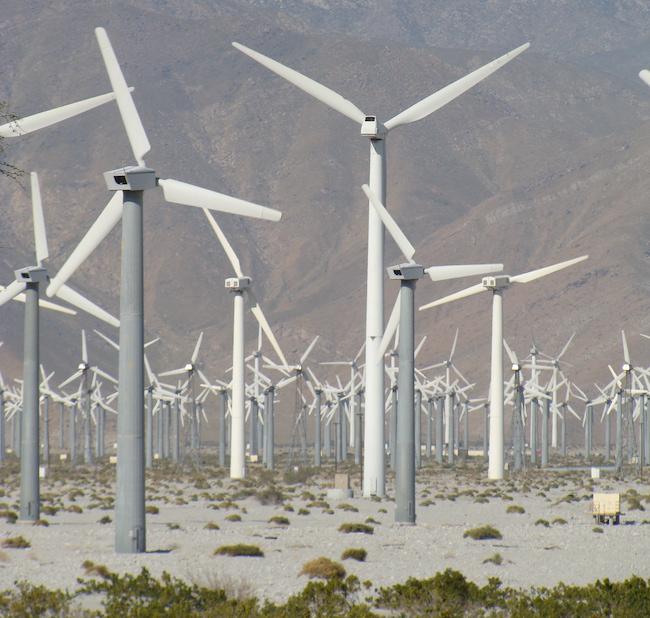

Companies in search of more renewable energy to power their growth can take heart from the example of Texas. The Lone Star State relies most heavily on natural gas and coal to generate electricity. It also has a fairly healthy nuclear sector. However, wind power has already leapfrogged past nuclear in Texas, and coal could be the next domino to fall. A new study indicates that the right balance of wind and solar power could provide for a reliable grid, without having to depend on expensive energy storage systems.
The New Texas Renewable Energy Study
The new study comes from Rice University under the title, "Assessing solar and wind complementarity in Texas." The study was performed by undergraduate student Joanna Slusarewicz and Rice professor Daniel Cohan, an environmental engineer.
In a press release, Slusarewicz explained the goal of the project:
. . . batteries remain too expensive to store Texas-sized amounts of energy for later use. “I did this project to see if there is a way, before we even start building more wind and solar farms, to distribute their current output to take advantage of differences in climate throughout the state,” Slusarewicz said.
Cohan added:
...Only in the past couple of years has solar become competitive with wind. Now Texas has two strong renewable options. That’s why this is the time to look at integrating these sources so they can do better than either can do on its own.
The point about energy storage is a critical one. The market for small scale, on-site energy storage is growing rapidly, but utility scale systems are still a long way from commercial viability due to their expense.
Currently, pumped hydro is the only large scale, low cost storage system available in the U.S., and appropriate sites for those facilities are few and far between.
Complementarity and grid stability
"Complementarity" refers to balancing the output of solar and wind power facilities.
Because wind and solar rely on natural conditions, the peak performance of wind turbines and solar panels varies considerably over time. The output can be optimal at different times of day, in different seasons, and in different regions of the same state.
The new study suggests that with the right mix of renewable energy, Texas grid operators could ensure reliability without depending on coal power, or on expensive energy storage facilities.
The researchers found that on both a yearly and daily bases, wind and solar power resources in Texas complement each other in terms of peak performance statewide.
They also found that wind resources alone also exhibit complementary peaks in production between two regions of the state, West Texas and South Texas.
Another main finding was that the highest firm capacity could be achieved by matching wind farms in West Texas with either solar power or wind farms in South Texas (firm capacity refers to the guaranteed amount of energy available at a given time).
The study concluded:
Solar farms are better suited for providing power during summertime hours of peak demand, whereas wind farms are better for winter. Taken together, our results suggest that Texas renewable power production can be made more reliable by combining resources of different types and locations.
Renewable Energy and Grid Integration
The study contributes important information that could help grid planners identify the most optimal sites -- those with the most effective complementarity -- for new renewable energy facilities.
The finding is especially important for Texas because the grid manager for 90 percent of the state, ERCOT (the Electric Reliability Council of Texas), is a self contained unit. Fortunately for Texas, it is a large, coastal state located in the sunny southwestern U.S. It has significant solar resources as well as a substantial range of optimal performance between its inland and coastal wind farms.
Grid operators in other states have more opportunities to export or import electricity, so they don't have to rely on in-state resources to achieve a suitable balance of wind and solar.
As for Texas, the researchers point out that in the recent past, the state's primary renewable energy resource was wind. Now, the Texas solar industry is beginning to build up steam, providing a new opportunity to plan ahead for integrating both more wind and more solar into the grid.
The researchers suggest that by expanding their analysis to include more sites, enough information could be assembled for grid planners to identify the specific locations that provide for maximum complementarity.
One step ahead of you . . .
In terms of national planning, the U.S. Department of Energy already has a long term grid modernization initiative under way. One of its chief goals is to accelerate integration of renewables. Here's the money quote from the initiative's home page:
Our portfolio of work will help integrate all sources of electricity better, improve the security of our nation's grid, solve challenges of energy storage and distributed generation, and provide a critical platform for U.S. competitiveness and innovation in a global energy economy.
That is somewhat out of step with President Trump's pro-coal rhetoric and his administration's efforts to keep aging coal power plants in operation. Nevertheless, during Trump's tenure DOE has maintained a strong focus on its renewable energy mission.
If you caught that item about distributed generation in the grid modernization initiative, that refers to decentralized power sources like rooftop solar and small wind arrays, including single turbines.
Trump or no Trump, businesses in search of renewable energy can look forward to less fossil power and more clean power in the future, whether it comes through a grid connection or from solar panels and wind turbines on their own property.
Image credit: Bonita de Boer/Flickr
3 Sustainable Fashion Trends to Watch During 2019
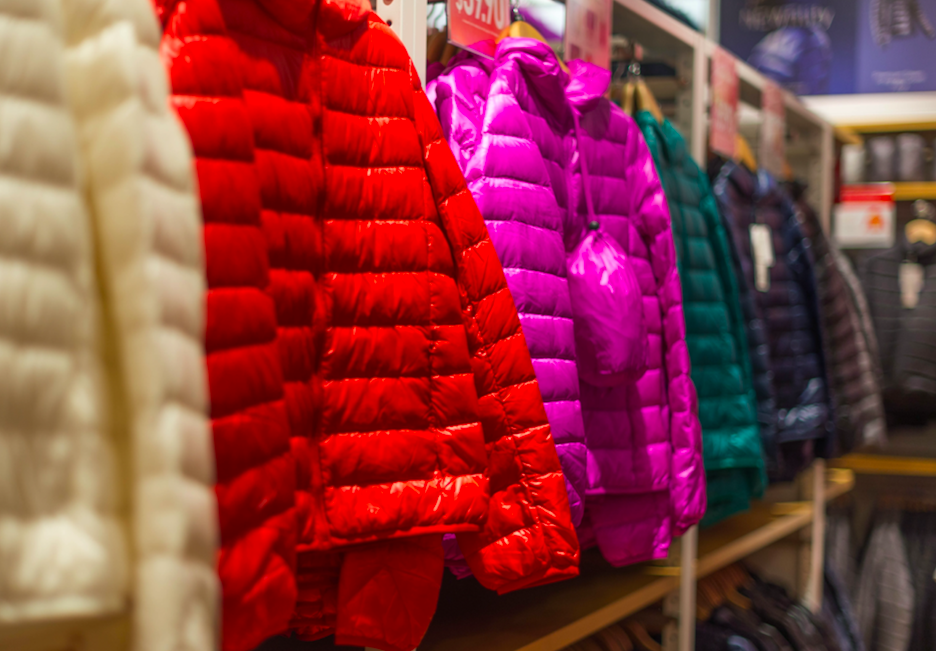

Let’s be honest – 2018 had some heartbreaking headlines regarding fashion and the environment. (We’re looking at you, Burberry.) There were several promising innovations, however, that are already shaping sustainable fashion in 2019. Here’s a look at three major trends for eco-friendly apparel for this year and beyond.
Innovations in insulation – bison and bottles
Here in southern New England, we’re still waiting for the first big snowstorm of 2019. When it hits, though, there will be plenty of eco-friendly, down-free warm outerwear options from which to choose.Outdoor apparel and accessories retailer United by Blue has introduced a proprietary outerwear insulation called B100. It contains North American bison fiber – a commonly discarded byproduct of the ranching industry - and a recycled polyester blend.
According to the press release announcing B100: “The bison’s shaggy coat consists of a layer of hollow, compactable, resilient hairs that allow them to keep warm and dry in the harshest winter climates…. United By Blue has spent the past five years creating a supply chain to intercept and harness the power of this natural fiber and diverting it from a landfill.”
In addition, The North Face recently announced the launch of its ThermoBall Eco jacket line. The round synthetic fiber clusters (made of recycled plastic bottles and recycled polyester fabric) trap heat within small air pockets, similar to traditional down insulation.
This is not the first time The North Face has turned to recycled products to make its clothing. Its signature Denali jacket featured recycled fibers as early as 1996. And earlier in 2018, the company launched its Bottle Source collection, which recycled 160,000 pounds of plastic bottles from waste streams at U.S. National Parks.
Looking ahead: In November 2018, insulation manufacturer PrimaLoft announced PrimaLoft Bio, the first synthetic insulation made from materials that are completely recycled and almost entirely biodegradable. Winter jackets featuring this insulation should be available in late 2020.
Rent, don’t own
What’s even better than recycling materials to make new clothes? Reusing the same clothes! Fashion rental services, which extend the lifespan of existing garments, are having an impact on the industry in a big way, according to Michelle Childs, assistant professor of Retail and Consumer Sciences at the University of Tennessee, Knoxville. She spoke with TriplePundit about the trend in rental fashion.:“In the current sharing economy, we are getting used to renting, not owning, things such as transportation or housing. This carries out to our wardrobe, as well. It makes sense for people who care about the quality and sustainability of their fashion.”
Currently, the biggest player in the fashion rental market is Rent the Runway, the 10-year-old privately held company currently valued around $800 million. Through Rent the Runway's website and smartphone app, customers can select clothing, handbags and accessories to rent and return. The items are all owned, shipped, stored, repaired and cleaned by Rent the Runway.
Tulerie, a peer-to-peer fashion rental app started in 2018, allows users to rent items from their own closets to one another, rather than from a fixed company inventory. The company’s sustainability page explains how fashion rental services can make a big environmental impact:
“The average garment should be worn at a minimum 30 times, even though most can withstand 200 wears…. How do we fulfill our adoration for the fashion industry and stand behind the necessary eco-conscious movement? Closet sharing.”
Looking ahead: Many conventional retailers are making moves to enter the fashion rental market. Fashion rental service Gwynnie Bee now offers retailers a package including the digital technology, cleaning and storage services needed to start and run a clothing-rental program. Ann Taylor and NY&Co. were two of the first to participate in this program (known as CaaStle), with more companies expected to join over the next few years.
“Green” goes mainstream
While many sustainable fashion brands are outside the budgets of many consumers, more affordable options are also increasingly available at traditional retailers.For example, I was excited to see a tag on my son’s new sweatpants from Target stating that they were made from recycled plastic water bottles. Sustainable options at that price point were unheard of a few years ago.
“There’s less of a price difference between sustainable and less sustainable options today thanks to consumer demand and technology,” explained Childs. “Ten years ago, if you surveyed customers and asked if they cared about sustainability, they’d say yes, but they wouldn’t change their purchasing activity because of it. Now, they are changing how they buy, and the prices reflect that.”
Image credit: Pexels/Roman Pohorecki
It’s the People’s Choice for the Circular Economy. What’s Your Vote?
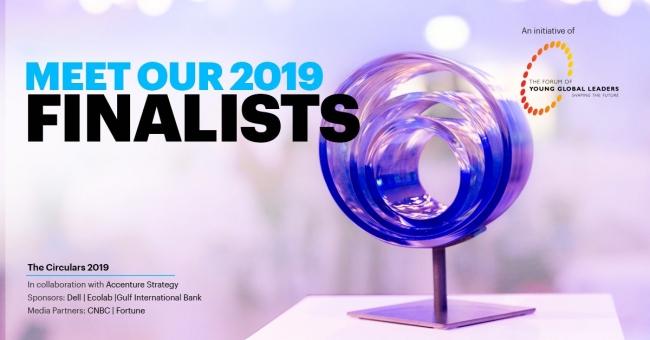

Each year in January we turn our eyes to the Swiss chalet of Davos, home to the World Economic Forum. They gather the foremost political, business and societal leaders to discuss and shape solutions for positive change. Their group of Young Global Leaders (YGL) focuses on overcoming barriers that stand in the way of progress, and one of their projects has been to support the annual Circulars Awards, recognizing excellence and achievement in the Circular Economy.
We believe that it takes ingenuity and collaboration to drive the changes needed for a switch to the circular economy, and the Dell Circular Economy People’s Choice Award is intended to recognize just that. Along with the YGL, we are presenting six exciting companies with innovative approaches. All are deserving, so we want the public to help choose.
And that’s where you come in.
Voting at The Circulars began January 7. Here are the six choices:
The dyeing process for textiles can be resource intensive, but DyeCoo has a solution that is water-free and uses no process chemicals. Instead, it actually uses carbon dioxide. Their process is a highly efficient, closed-loop system. By using CO2 under high pressure, they are able to transfer dyes easily and deeply into fibers without generating waste water. They estimate that one of their dyeing machines can save 32 million liters of water (that’s like 55 million Venti coffees).
The world is waking up to the challenges created by single-use plastics, especially in food packaging. Ecoware has an innovative solution to that, converting agricultural waste into disposable food packaging that uses no plastic, is 100 percent compostable in home facilities and biodegrades in 90 days in soil. Their containers are also oil- and water-proof for up to an hour. In addition to avoiding the use of fossil fuels for plastics, Ecoware’s ability to source from agricultural waste gives Indian farmers an opportunity to monetize something they were previously burning, which contributed to air pollution.
Ever wonder what to do with old clothes? Discarded clothing occupies 10 percent of landfills. While donation is a great first bet, like other things, these can (and should) be recycled if they are no longer used. Geetanjali begins by taking bales of recycled clothing and sorts by type and color. They are then able to reprocess them in a highly efficient system that uses no dyes, no chemicals and little water. They even have a rainwater harvesting system that serves 35% of their production needs.
While many electronics have become indispensable to daily life, there are others that fill a niche or provide a great service that you may want, but not use all the time. Enter Grover – helping break the link between ownership and use. By providing a subscription service for electronics, they allow you to get the equipment you want for specific uses without having to buy it. Vacation of a lifetime coming up? Maybe rent a high-end camera and even a drone. Since 2015 they have recirculated more than 50,000 devices.
Triciclos believes waste is a consequence of consumer habits and bad design. More than a recycling company, they are tackling waste at the system level, providing reverse logistics, materials tracking, collection of recyclables via multiple models, design consulting and even environmental education programs. They operate the largest network of recycling stations in South America and have diverted 33,145 tons of recyclable material from landfills.
For retailers without strong reverse logistics and returns programs, ZigZag can provide that as a service. They help retailers reduce waste and cost by facilitating exchanges, returns, resale, remanufacturing and recycling – all seamlessly integrated with their customers’ e-commerce sites. Their global reach and multiple warehouse sites enable them to leverage technology and scale to ensure those returns are handled in the most sustainable way. For example, they are able to collect and consolidate returns for batch processing.
Each of these companies is bringing innovation and excitement to the circular economy. Now it’s your turn to decide which one should be named the Dell People’s Choice Circular Economy Award winner!
Vote here.
Read more on how Dell and our customers are supporting a circular economy.
Previously published on Direct2Dell and 3BL Media news.
5 Companies Resisting President Trump’s Policies In 2018
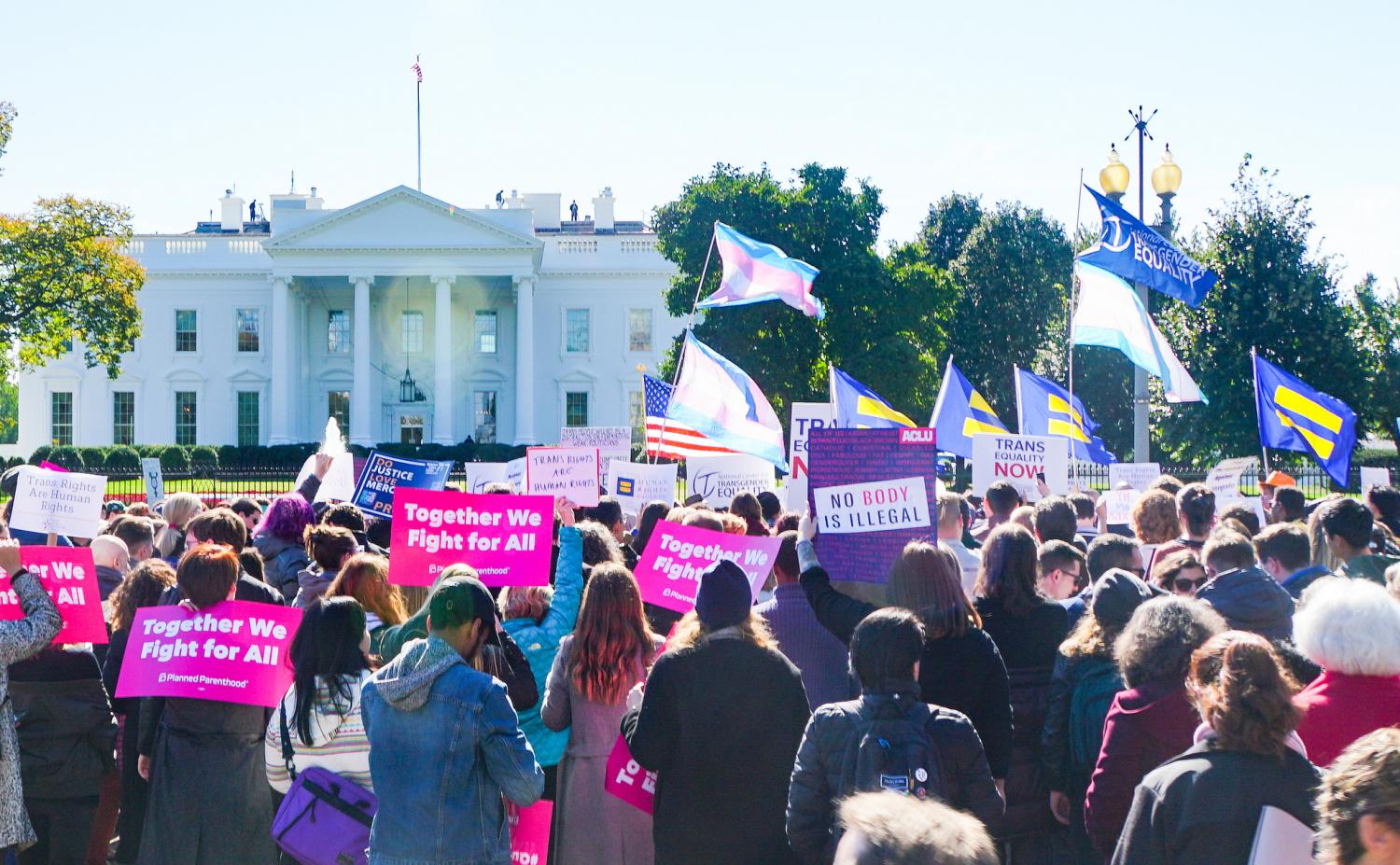

2017 certainly was a lively year as many companies quickly stood up against the Trump Administration on various policies, from immigration to the environment. This wave of corporate activism continued during 2018, as more companies became emboldened to draw a line in the sand when it came to many of the most volatile social and political challenges festering within and beyond America’s borders.
Of course, there were far more than these five companies that made it clear they opposed Trump’s rhetoric and positions on various issues. For example, we have Cards Against Humanity, which bought a plot of land along the U.S.-Mexico border in an attempt to foil the president’s much ballyhooed “wall.” Bill Penzy, the CEO of Penzy’s Spices, will speak out against #45 any opportunity he can, and has does not hesitate to call this POTUS a “racist.”
Nevertheless, from our point of view, we mention five companies that have stood out during 2018 for stepping up and speaking out against some of the recent policies that have come out of the White House.
Airbnb
A year in politics can seem like a lifetime; during this current administration, it may seem like nine lifetimes, no matter which side you’re on when it comes to this current president. Airbnb has been a vocal critic of the Trump White House from the beginning, being one of the most recognizable of brands taking stands. Shortly after the president’s inauguration and attempt at implementing a travel ban, the accommodation booking site offered free housing to anyone affected by the policy.
Plus, it’s been almost a year, but remember when the president referred to a bevy of Latin American and African nations as “s---hole” countries? Well, Airbnb trolled Trump during his most recent State of the Union address by touting the travel possibilities at places such as Haiti:
IBM
True, 56 companies immediately sent a letter to the Trump White House last fall after the administration announced that it would define a person’s gender based on biological sex at birth. But IBM did more than just sign that letter: it quickly went public to declare that the company believed such a policy was wrong. “We’re proud to stand in support of the transgender and entire LGBT+ communities,” said Tia Salas, IBM's vice president, global chief diversity and inclusion officer, in a statement posted on the Human Rights Campaign’s web site. “And it’s why we will continue advocating for Congress to pass the Equality Act and ensure transgender individuals are treated equally under the law.”
The company has pledged to support any employee’s gender identity and expression since 2002; its nondiscrimination policy toward gay and lesbian employees dates back to 1984.
Levi Strauss
Unlike Dick’s Sporting Goods, which actually sells guns (though it drastically changed that policy after the Parkland, Florida mass shooting) Levi’s is, of course, in the business of apparel. But that didn’t stop the company from supporting organizations focused on stopping gun violence.
Furthermore, the company has been vocal about the White House’s unilateral decision to raise tariffs, and has made it clear that this policy shift will affect far more companies than those that make or procure aluminum and steel. Last summer, Levi’s Chief Financial Officer, Harmit Singh, told CNBC the tariffs “could have an impact at how people look at American products and American companies. And that is something that we do worry about.”
Microsoft
Like many technology companies, Microsoft has been called out for allegations that its software was being used by Immigration and Customs Enforcement (ICE) as it separated families at the southern U.S. border. And in response, Microsoft has steadfastly denied that has been the case. In turn, the tech giant was one of the first, and loudest, to speak out against the family separation policy. “As a company, Microsoft is dismayed by the forcible separation of children from their families at the border, said the company in a June 18 statement. Furthermore, the company appeared to lecture the White House on immigration policy, as it said, “Family unification has been a fundamental tenet of American policy and law since the end of World War II.”
A day later, Microsoft amplified its call to Washington, D.C. to get its act together. “We need Congress to remember the fundamental decency and humanitarian spirit that defines us as a people and a nation. In short, we need to take care of children,” Microsoft’s president, Brad Smith, said on the company’s blog.
The company manages its own program and software to help its 15,000 visa-dependent employees navigate through the massive labyrinth that comprises U.S. immigration rules and policies. Microsoft is also among the tech giants that publicly argues that ongoing immigration policies will hurt the U.S. economy in the long term.
Patagonia
The outdoor clothing apparel maker and retailer has been quick to put its thumb in the president’s eye. Following the Trump Administration’s announcement in late 2017 that it would roll back some of the land protections granted by President Obama, Patagonia rolled out a campaign blaring “The President Stole Your Land.” So, what did the company do this year with the $10 million or so windfall it received from the Trump tax cuts? It donated that money to groups fighting climate change – and in announcing that largess, Patagonia’s CEO, Rose Marcario, described Trump’s environmental policies as “evil.”
Image credit: Ted Eytan/Flickr
GRI Proposes New Standard on Corporate Tax Reporting


Recent tax-related scandals such as the release of the Panama Papers and Paradise Papers have led to a public debate around the world and a growing demand from investors and other stakeholders for greater transparency around corporate tax payments. Yet few companies today publicly report on tax-related information in any detailed way.
Getting that information out to the public is the aim of a new draft standard on corporate tax reporting from the Global Sustainability Standards Board (GSSB), the independent standard-setting body of the Global Reporting Initiative (GRI).
The draft standard on tax and payments to governments, out for public comment until March 15, sets out common, well-defined disclosures related to tax strategy, governance, control, risk and stakeholder engagement, as well as country-by-country reporting of income, tax and business activities, according to GRI.
“The tax-related information that organizations currently make public is very limited, particularly at the individual country level,” Judy Kuszewski, chair of the GSSB, told TriplePundit. “The majority of companies report only generic information about their tax strategy. Just a small minority of companies publicly report on their tax and payments on a country-by-country basis, and most of these companies operate in a single country.”
Few companies come clean on tax practices
The current state of public tax reporting leaves much to be desired. A recent study by RobecoSAM indicated that only 17 percent out of 830 companies surveyed were reporting publicly on tax payments at a country level, and most of these were only operating in a single country.
A small number of organizations report comprehensively based on voluntary guidelines. In addition, there is regulation relevant to specific sectors or types of organizations in place in a few jurisdictions, with one example being Norway’s requirements for companies involved in extractive and logging activities.
“But overall, the tax behavior of most multinationals remains largely opaque for stakeholders,” Kuszewski says.
The extent to which bad behavior flourishes was evident in both the Paradise Papers and Panama Papers, as global media investigations led to the release of millions of documents revealing how some of the world’s most powerful people and companies exploit secretive offshore tax regimes.
“Most companies – especially small and medium-sized companies – do not engage in tax avoidance or aggressive tax planning, Kuszewski told TriplePundit, “and they may be at a competitive disadvantage relative to the few companies that do.”
With the draft standard, GRI is aiming to open the conversation, she adds, “to have a more informed public debate, creating an environment for better policy and investment decisions.”
Promoting trust and transparency
There are myriad benefits to being more open about tax practices, she says. “Increased reporting will enable stakeholders to make informed judgments about the suitability of an organization’s position on tax and payments to governments, and any risks that this may entail. It will promote trust and credibility in the taxation system and may discourage organizations from engaging in certain aggressive tax avoidance practices.”
Companies who are more transparent on their tax and payments to governments are more likely to be seen by stakeholders as trustworthy and accountable, and it can also strengthen the organization’s position on sustainability, she adds.
“Those companies that step forward and demonstrate their contribution to the community through tax [payments] will potentially benefit from greater social license to operate and better stakeholder relationships,” Kuszewski says.
Investors want more accountability
The increasing flow of investment capital driven by ESG factors, as TriplePundit has previously reported, is also driving new measurement standards.
According to Kuszewski, “investors are increasingly looking at a broader set of ESG issues to enable them, whenever possible, to avoid financing corporate activity that does not match their values or presents unacceptable risks, or at least make the most informed decision they can.”
An analysis published in late November by the Financial Accountability and Corporate Transparency (FACT) Coalition, a non-partisan alliance of more than 100 state, national, and international organizations working toward a fair tax system, found that investors are at an increasing risk from the lack of information disclosed by companies about their tax practices.
Several prominent investors, accountants, financial analysts, and academics — including investors with more than $70 trillion under management, the Certified Financial Analysts Association, and the Investor Advisory Committees at both the Securities and Exchange Commission (SEC) and Financial Accounting Standards Board (FASB) — have spoken out in favor of increased transparency on corporate tax practices, according to FACT.
Staying ahead of regulatory demands
Country-by-country tax reporting is critical in order to help identify where the economic substance of an organization’s activity is located, and if the taxes paid in that location reflect this reality. Such reporting may well become the norm, Kuszewski predicts, following regulatory developments to put an end to aggressive tax minimization practices.
Tax authorities in many countries have already implemented country-by-country reporting after the G-20 group of leading economies endorsed the practice as the international norm. The European Union already requires this type of information be publicly disclosed by larger banks and extractive industry companies, and the EU is in the process of expanding those requirements to all large companies.
For several years, the SEC has been considering increases to disclosure requirements around international taxation. FASB is undertaking its own process weighing whether to expand corporate disclosure requirements in the accounting standards.
Most companies are already aware of this issue, and anticipate public country-by-country reporting to be adopted in the next few years, according to Deloitte’s 2018 Base Erosion and Profit Shifting (BEPS) survey.
“Companies can stay ahead of this curve by reporting using GRI’s proposed Standard,” Kuszewski says. “During this public comment period, the GSSB is particularly keen to hear from potential reporters, and we have posed some specific questions in the consultation materials, which we very much welcome companies’ views on.”
Image credit: Pixabay